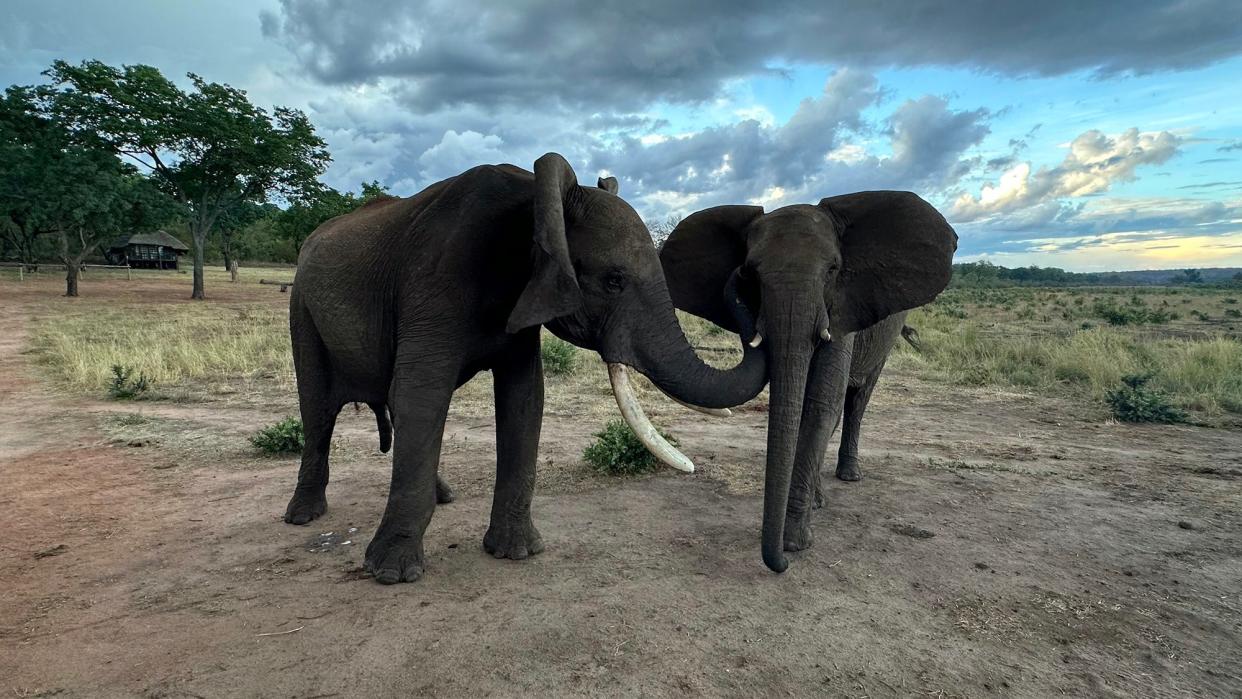Expressive elephants use gestures and vocal cues to communicate

Communication is more than just verbal cues. It’s also glances and gestures and many primates, including humans, use motions to convey their message. Similarly, African elephants (Loxodonta africana) may change their greetings depending on whether the other elephant is looking at them. The gentle giants also use different combinations of gestures and vocalizations to get their points across that are described in a study published May 9 in the journal Communications Biology.
[Related: These birds appear to be signaling ‘after you’ ]
“If we ask someone to pass us the cup, we might point towards a specific cup to make them understand which one we want,” Vesta Eleuteri, a study co-author and behavioral biologist at the University of Vienna in Austria, tells PopSci. “Or, when we are sarcastic, we may use facial expressions, use a specific tone, or specific gestures to convey that we’re not being completely serious.”
To see how elephants may be using similar combinations of gestures and noises, Eleuteri and her team studied elephant greetings by semi-captive African savannah elephants living in the Jafuta Reserve in Zimbabwe. From November to December 2021, the team observed 1,014 physical actions and 268 vocalizations used when greeting other elephants.
https://www.youtube.com/watch?v=CCGOliNk-qc\u0026t=1s
The scientists found that the elephants greeted each other with specific combinations of vocalizations and gestures, such as rumbles with ear-flapping or ear-spreading. They also saw seemingly less deliberate physical movements including tail-raising and waggling. A combination of rumbling and ear-flapping was the most common form of greeting, but it was more frequently used between females than between males. Urination, defecation, and secretions of a sweat gland unique to elephants known as the temporal gland was also present in 71 percent of greetings.
[Related: Sperm whales may have their own ‘alphabet.’]
“Hearing and smell are very important senses for elephants and have, thus, been vastly studied, while there is the common belief that elephants don’t rely much on vision,” sys Eleuteri. “Our study provides evidence that elephants appropriately target gestures at each other during
greeting, as well as the first systematic description of the different gesture types used and how they combine them with calls during greeting.”
Communication methods varied depending on whether the subject of the greeting was looking at them. The elephants were more likely to use a visual gesture like ear-spreading, trunk-reaching, or trunk-swinging when they were being watched. Sounds like ear-flapping or touching the recipient of their greeting with their trunk were used when they were not being watched.
https://www.youtube.com/watch?v=OQAalGsLgH8\u0026t=17s
According to Eleuteri, some of the observations seemed chaotic at first glance, the elephants were actually combining calls and physical actions in an ordered structure. It could shed some light into possible grammatical abilities in elephants.
These findings suggest that elephants may be deliberately altering their communication depending on whether or not they have an individual’s visual attention. They may also promote individual recognition and social bonding among the elephants.
[Related: Artificial intelligence is helping scientists decode animal languages.]
The study also adds insight into how more multifaceted communication systems evolved in various mammals. Chimpanzees and other apes have also been observed altering the gestures according to whether or not they are being looked at and also combine vocalizations and gestures in specific ways. While both species are distantly related, elephants and chimpanzees share complex societies and advanced intelligence. These communication traits may have evolved independently in some primates and elephants.
In future studies, the team hopes to see how flexible the elephants are with their gestures. They also aim to understand just how many different types of motions wild elephants use and potentially what they mean.
“They might be saying: ‘come here,’ ‘move away!’ or maybe even ‘smell me,’” says Eleuteri.

